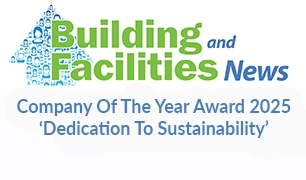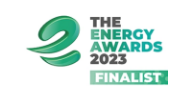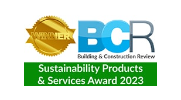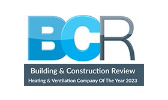Commonly used in commercial, and industrial settings to provide a steady supply of hot water for various purposes, such as bathing, cooking, cleaning, and heating spaces, electric water heaters operate by converting electrical energy into heat through resistive heating elements submerged in the water. These elements are controlled by thermostats to maintain the desired water temperature.
What are the types of electric water heaters?
Electric water heaters come in various configurations, each suited to different needs and applications. The three main types of electric water heaters are:
- Tank (Storage) Water Heaters
- Tankless (On-Demand) Water Heaters
- Heat Pump Water Heaters
- Electric Boiler
What is the difference between commercial tankless and tank water heaters?
Commercial settings often have different requirements for hot water compared to residential settings, including higher demand and different usage patterns. The choice between tankless and tank water heaters in a commercial context depends on various factors such as hot water demand, energy efficiency, space constraints, and budget.
Tank or Storage Water Heaters
Tank water heaters are the most traditional and widely used type of water heater. They consist of an insulated tank that stores a large volume of water, typically ranging from 75 to 300 litres, although bespoke cylinders are available.
Within the tank, electric heating elements heat the water. These elements are usually controlled by a thermostat, which ensures the water remains at the set temperature, ready for use whenever needed. When hot water is drawn from the tank, it is replaced with cold water, which is then heated to maintain the tank’s temperature. This approach enables storage water heaters to provide a constant supply of hot water, making them suitable for situations where hot water demand is high or spread out over time.
Commercial tank water heaters can store large volumes of hot water, with capacities often exceeding 375 litres. These heaters will therefore require significant space for installation due to their large size. They also need adequate clearance and ventilation.
Such capacities do make them suitable for applications with steady and high hot water usage, such as hotels, restaurants, and hospitals.
While commercial tank water heaters are designed to be more efficient than residential models, and the initial cost of commercial tank water heaters is generally lower than that of tankless systems they will suffer because they constantly heat and reheat a large volume of water to maintain the set temperature, leading to standby heat loss.
Tankless (On-Demand) Water Heaters
Tankless water heaters, or on-demand water heaters, eliminate the need for storage while capable of delivering a continuous supply of hot wate When a hot water tap is turned on, cold water flows through a heat exchanger where it is rapidly heated by electric heating elements. The water is then delivered directly to the tap at the desired temperature which is advantageous for businesses with fluctuating or peak hot water demands.
By only supplying heat water when needed, they eliminate issues of standby heat loss, reducing energy waste to be more energy efficient. This can result in significant cost savings over time, particularly in businesses with variable hot water usage. What limits these units is their flow rate, meaning multiple simultaneous uses (e.g., showering and basin use) can affect performance. They also have high power demands which can lead to expensive upgrades to electrical systems and concerns over the operational costs of extra demands on electricity. If a system is designed correctly the lower operating costs and longer lifespan can potentially offset the initial investment where the upfront cost of commercial tankless water heaters is typically higher.
Heat Pump Water Heaters
Heat pump water heaters use electricity to move heat from one place to another instead of generating heat directly.
Typically, more energy-efficient than traditional electric water heaters, heat pump water heaters extract heat from the air or ground and transfer it to the water in the storage tank. They use a reverse refrigeration cycle, like that found in air conditioners or refrigerators, to leverage ambient heat from the surrounding air or ground. Most new build commercial applications, due to ease of installation and cost, will specify air source heat pumps which can be significantly more efficient than traditional electric water heaters, sometimes reducing energy use by up to 50%. However, the performance is best when operating with a cold water input and lower temperature water output (35°C), this makes them perfect for applications such as underfloor heating. But when water temperatures must be consistently high (+60°C), as required by commercial applications to counter the risk of legionella development, efficiency can rapidly fall away and be further exacerbated where there is less ambient heat to extract, such as during the colder winter months. Heat pump water heaters tend to be complex and so more expensive upfront, so most commercial applications will aim to leverage the heat pump technology as a preheat combined with a storage water heater and electric top-up.
Packaged Electric Water Heating Systems
Packaged electric water heaters combine the best of both worlds, deploying an electric boiler with a storage cylinder and heating water indirectly via the cylinder’s coil. The boiler does have a small internal tank used in conjunction with built-in controls to better manage efficient and consistent heating from multiple immersion packs working in unison. This provides the functionality of a storage water heater, without the dependence on a single, high-temperature immersion for fully electric water heating. Due to the more effective use of the heating elements the boiler will exhibit greater system longevity and resilience, with built-in backup and almost zero limescale development in hard water areas. Whilst commercial larger electric boiler units (100 kW) will be floor standing, the latest packaged systems use smaller, more compact units which can be wall mounted, or as in the case of Adveco’s FUSION, mounted directly onto the cylinder to minimise pipe run and maximise available plant room space.
The FUSION packaged electric water heating system offers a variety of ways to extend operational capabilities, whether adding backup immersion for 24/7/365 resiliency, or with dual coil cylinder options adding a low-carbon energy source as a preheat to reduce demands on primary electrical heating. The predominant option is to add an air source heat pump or solar thermal. Both options considerably reduce carbon emissions from the water heater, with the heat pump able to maximise its SCOP by preheating cold water avoiding excess electrical demand. This goes some way towards reducing electrical costs, solar thermal, as a true renewable, will actively cut at least 30% of the annual energy demands for water heating for considerable operational cost savings and faster system return on investment.
Conclusion
For organisations seeking to cut carbon emissions from buildings, but also deeply aware of the costs of doing so, electric water heating if well designed and implemented is the best current option for a net zero system. As grid electricity becomes decreasingly reliant on fossil fuels for its generation, electric water heating systems established today will become green over time without further alteration. They are already an essential specification for new build projects helping secure necessary BREEAM points and meeting the requirements of Part L. in settings, offering reliable hot water supply through various technologies. Whilst there remain several optional approaches to using electric water heating in commercial applications, the capacity, size and length of demand periods, high water temperatures, energy efficiency, and limitation on installation space means storage water heaters will continue to be the most popular choice, but with packaged systems being the most popular option with increased versatility and greater built-in system resiliency for more cost-effective specification than the bespoke route.
Discover more about electric water heating or contact us to discuss your project needs…
















